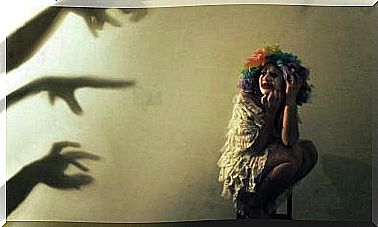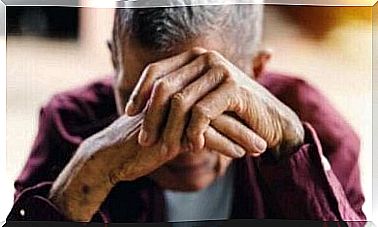10 Types Of Psychopaths According To Kurt Schneider

Kurt Schneider was a German physician, psychiatrist and philosopher and a pioneer in his field. He is considered the foremost representative of the Heidelberg School of Psychiatry, alongside Karl Jaspers. His work in which he identified 10 different types of psychopaths constituted an important historical milestone in this branch of psychology.
The Heidelberg School was unique in its way of looking at mental illness, for it attached great importance to the biological factors that affected patients. Emil Kraepelin exerted a great influence on this current of ideas through his work to classify disturbances based on their expressions rather than their causes.
Kurt Schneider’s classification of different types of psychopaths has played an important role in the subsequent development of psychiatry. It is based on the idea that a psychopath is a person who in an ambiguous way deviates from normative behaviors. Based on this perspective, there are 10 different psychopathic personality types.
“Despite the psychopaths’ lack of conscience and lack of empathy for others, they are inevitably better at deceiving people than any other perpetrator.”
-Anna Salter-

Kurt Schneider’s 10 Types of Psychopaths:
1. Hypertymic
The first of Schneider’s personality types is the hypertymic. Hypertymic psychopaths are usually happy, active and impulsive. Schneider believed that this personality type has the sanguine temperament that characterizes an individual with thin blood. He described them as assertive and sympathetic scammers who have a tendency to cheat, cheat and get involved in minor transgressions.
2. Depressive
These psychopaths tend to be melancholy and moody, although it is not always easy to detect this because they hide what they are feeling. The basic effect of some of them is melancholy, while for others it is irritation and paranoia. This type as well as the former often suffers from alcoholism. People with paranoid depression can be extremely insensitive.
Uncertain or self-doubting types of psychopaths
Within this group, there are two types of psychopaths: sensitive and obsessive-compulsive. The first type are very easy to influence, but they have a hard time expressing their feelings.
In contrast, obsessive-compulsive psychopaths turn their insecurities into obsessive-compulsive disorder. They can be very inflexible. Although people who belong to this category may often seem “odd” and even “shady”, they rarely commit any crimes.
4. Fanatics
Psychopaths in this category place an exaggerated value on a certain set of ideas that they live out with great emotional intensity. Some are passive fanatics, while others are combative fanatics.
As a rule, this type is most often seen among mature men and women. Sometimes they commit minor crimes as a result of their beliefs, but in general they are content to do things that cause social disruption.
5. Attention seekers
The distinguishing feature of this type is vanity. They always pretend (to themselves and others) that they are more than they really are. They lie intentionally and people believe in them.
Attention-seeking psychopaths are also dishonest with their emotions, making it impossible for them to form relationships with other people. It does not know how to love others. In this group there are some subcategories. There are eccentrics (those who attract attention with the help of strange actions), scoundrels (those who constantly brag) and liars (those who organize structured fantasies to deceive others).
6. Labila
It is easy to confuse this type with the depressed. But in this category, the individual undergoes episodes of sadness or moodiness that suddenly appear and just as suddenly disappear. It’s like a violent storm passing by unexpectedly. Labile psychopaths are often addicts and can commit sporadic, emotional crimes. This type occurs exclusively among young and very old people.
7. Explosive
Explosive psychopaths have a violent temperament and even insignificant events can provoke them. Most explosive psychopaths are women under 50.
They become involved in all kinds of crime. They are disobedient, rebellious and have a bad influence on other people. In general, they are childish and underdeveloped and have very poor self-control.
8. Loveless types of psychopaths
This is the height of psychopathy. Loveless psychopaths lack compassion, shame, embarrassment and guilt. What mainly characterizes them is a very poor self-awareness. They have a tendency to be stubborn, cold and antisocial.
People who belong to this category commit all sorts of crimes, including crimes that involve brutality. At the same time, despite lack of scruples, many succeed in complying with the laws.
9. Weak-willed
This type of psychopath is impressionable and receptive to all kinds of stimuli. They are friendly and sensible, but also inconsistent and malleable. Individuals in this category often become involved in robbery, embezzlement, fraud and prostitution. It happens that they commit crimes due to the social pressure in their social circle. Weak psychopaths are usually young people.
10. Asthenic types of psychopaths
Some asthenians (or weaknesses) are physical, while others are mental. In both cases, an individual with asthenia is very attentive to his body and mind. And in both cases, the person concerned may begin to feel uncomfortable in their own company. The person may suffer from imaginary disorders, such as hypervigilance. It rarely happens that they commit any crimes. However, they often end up in hospitals.
In conclusion, it can be stated that Kurt Schneider’s 10 types of psychopaths are a classification tool that is now considered obsolete. However, many of his ideas came to be building blocks for later development. In general, no one seriously questions his systematization. Instead, they try to modify it.









